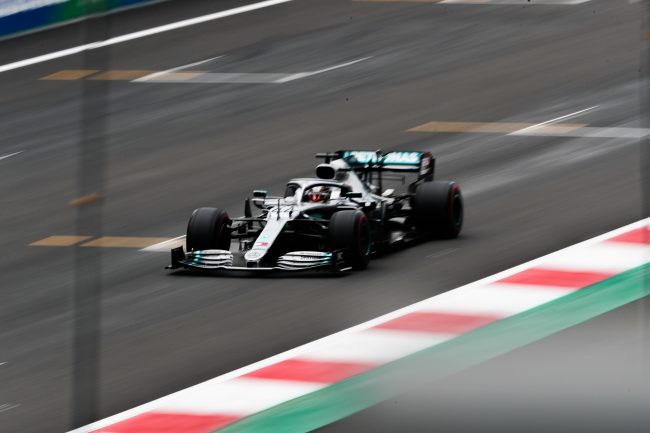Many customers ask themselves nowadays – what is a connected vehicle? It isn’t a term we hear that often in our everyday lives. We know what vehicles are, but the ‘connected’ part might be somewhat confusing. As surprising as it sounds, it is something every single person will be using in the near future. If you still haven’t gotten the whole idea of it, there is a simple definition to it, as follows.
What is a Connected Vehicle?
A connected vehicle is a vehicle that contains wireless networks that can link with nearby devices such as laptops, phones, nearby infrastructure buildings, trains, traffic signals, etc. Many would also define a connected vehicle as a system of Internet of Things (IoT).
Connected vehicles are able to access, send, and receive data, communicating real-time locations and events to every device around them, and upcoming. This allows the connected vehicle to continuously stay updated on what is going on during your drive. It is very effective for road safety, as well as keeping the environment cleaner.
The best thing about connected vehicles is that all the vehicle information that they send or receive is under data protection. You won’t have to worry about any information or data leak to an outside source.

History Of Connected Vehicles
No, we didn’t invent connected vehicles in the 21st century. In fact, the first one was created back in 1980, in a Formula 1 racing car. The connected features of the Formula 1 were a board computer that was installed by BMW. It would take over a decade to actually be used on the road by other vehicles.
General Motors (GM), along with OnStar, was the first to bring connected vehicles on the road. Three versions of the famous ‘Cadillac’ model were the first to use connected features. The first feature ever installed was the emergency call (eCall), where the main purpose of it all was to promote safety and get assistance after an accident.
We all know what GPS is, but until a few decades ago, it wasn’t a really popular term. Only those who were tech-savvy knew about its capabilities. Back in 2000, GPS features became a part of connected vehicles, which is just two decades ago. Before that, only the military would use it for various purposes. It’s a very important feature since it allows people to track stolen vehicles, as well as people. Nowadays, vehicle manufacturers consider it an integral part of connected vehicles and use it for many of its features.
Additional connected vehicle features
In 2001, vehicle manufacturers would install remote diagnostics in their connected vehicles, to let them diagnose problems within the vehicle much quicker. Since then, the technology of connected vehicles has improved dramatically.
The first-ever built-in SIM cards in a vehicle would be invented by BMW, back in 1998. Since 2004, the company includes them in some of its high-end models. The SIM card allows its drivers to check messages, weather forecasts, office functions and includes anonymous tracking of heavy traffic jams.
Just one year after Apple would introduce their first-ever iPhone back in 2008, Chrysler will be the first company to use the Internet Hotspot feature. From there on, it is a new step for the automotive industry and its technology usage in vehicles, as well as a huge leap for connected vehicles.

What Are Some Connected Vehicle Trends?
The connected vehicle is becoming the future of transportation. Features such as wireless networks and artificial intelligence (AI) are now becoming the heart of the connected vehicle.
AI Interface
Newly-developed Artificial Intelligence (AI) software now serves as a personal assistant, responding to your commands, using face recognition, and guiding us where we need to go. This is but a fraction of connected vehicle features.
Telematics
With telematics in connected vehicles, drivers are more alert, increasing the safety rating. They receive notifications (reminders) not to stray off lanes and cause accidents, as well as other numerous benefits. It also has a smart maintenance service that keeps you updated on when you need to service your vehicle. Most connected vehicles manufactured after 2015 have telematics installed.
Self-Driving Vehicles
Fifty years ago, people would talk about how future generations will be using self-driving vehicles in the near future. Well, that day has finally arrived. Some high-end models such as the Mercedes S Class, BMW 7 Series, etc., have a partial self-driving option. Self-driving vehicles have various levels of automation, and each year they receive upgrades and updates to a higher intelligence level of self-driving. Most automakers claim that in the next decade, there will be many fully self-driving vehicles out on the road. However, they differ from connected vehicles in terms of navigation. Unlike autonomous vehicles, we are still in control when we drive our connected vehicle.
Car-to-Car communication
As mentioned before, connected vehicles communicate with each other wirelessly on the road. This is important for traffic purposes and crash prevention. Every new car will have this featured in the following years.
Sensors
This is all the use of open and closed-loop control strategies used in car mechanics. This involves the monitoring of the car battery, transmission oil pressure, gas exhaust control, etc. The best thing about sensors is that it helps the connected vehicle use fuel more efficiently, saving you those extra dollars on gas.
5G
Yes, 5G is the upcoming trend of connected vehicles. In the future, 5G will allow connected vehicles to transmit data of how they’re driving. It will have very strong receivers and transmitters which will allow real-time communication to be much faster. All real-time locations will be more accurate. Having 5G in a connected vehicle will allow communication to city networks, helping you find parking, locating hidden areas, and informing you on which alternative turn to take when there are high traffic jams or any road blockages.


